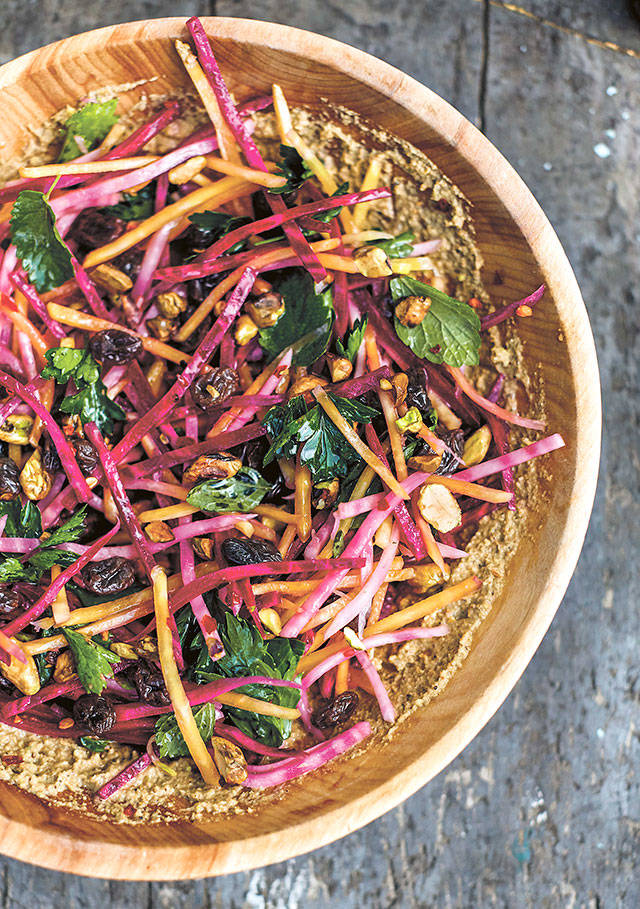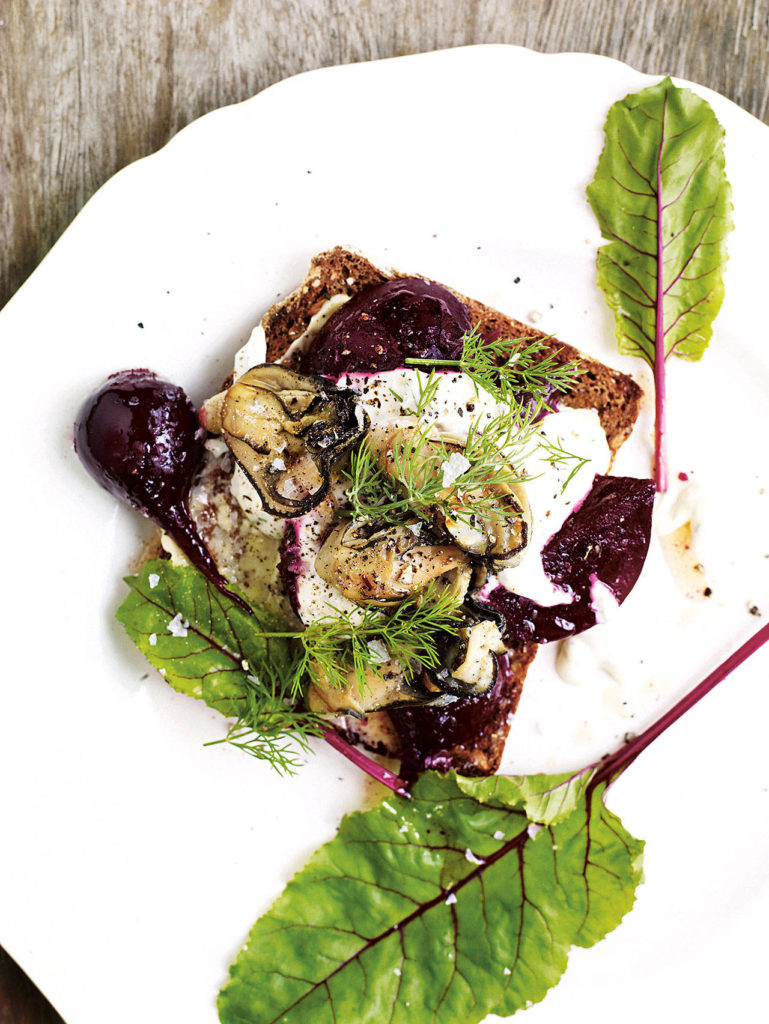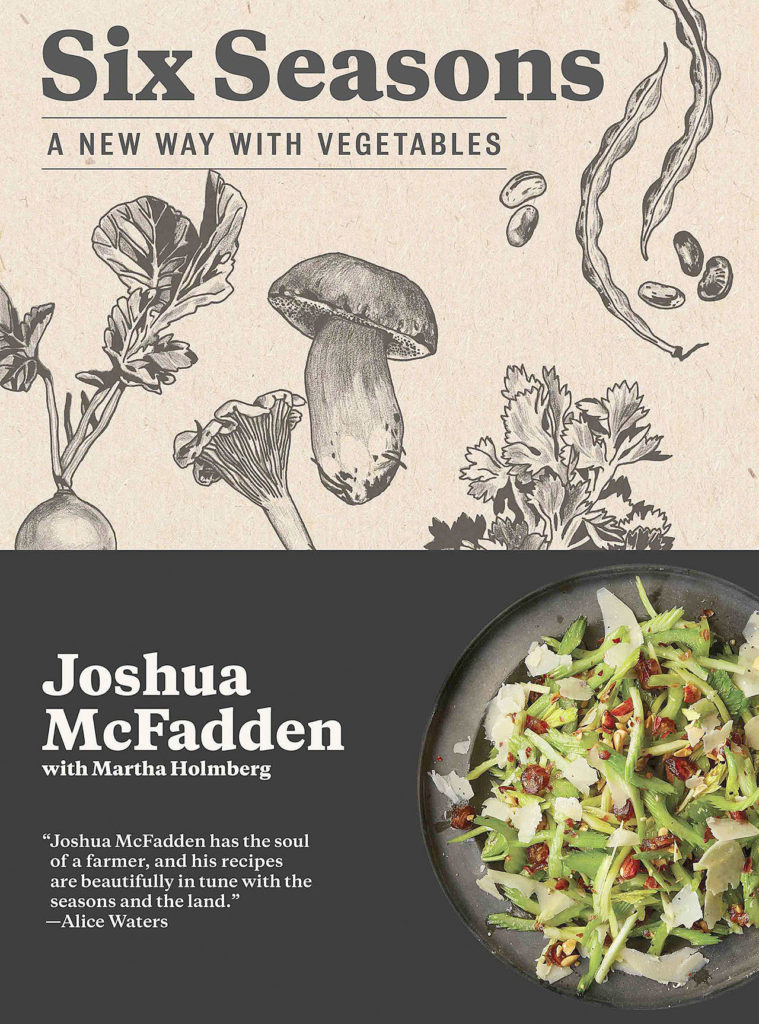In Day 2 of Food52’s Piglet Tournament of Cookbooks, “Six Seasons: A New Way with Vegetables” by Portland chef Joshua McFadden took on “Gather: Everyday Seasonal Food from a Year in our Landscapes” by celebrated English and former River Cottage chef Gill Meller.
It’s well past Day 2 of The Piglet competition, so I’ll just spoil it for you: “Six Seasons” wins.
While I prefer “Gather” for my shelf, I’d have picked “Six Seasons” to win in competition, and for similar reasons to why this pair’s judge did. Approachability.
“Gather” is alluring but at times, if you’re not able to source Meller’s hyper-local ingredients, a bit too specific. Recipes are inspired by Meller’s surrounding landscape. While this region of inspiration is interestingly similar to the Northwest, his recipes often teeter on the edge of restaurant-quality difficulty with specialized ingredients and a heightened degree of finesse. Meller breaks his recipes into chapters inspired by “farm,” “orchard,” “harbor” and “woodland.” Only “moor” seems to stump me, but we do have a number of sloughs in area, perhaps that will suffice.
“Six Seasons” is also offered by a chef and restaurant owner. Yet despite a similar restaurant-quality finesse, his recipes seem more easily replicable in the home kitchen. When compared to Meller’s ethereal beauty of localized foods, McFadden’s recipes are a bit more homey.
When I consider McFadden’s recipes, I think, “I can cook this.” With Meller, I think, “I’ll make this for such-and-such special occasion.” Still, Meller has inspired flavor combinations and several dishes, despite their complex appearance, come together easily.
In regard as to which to purchase for the home shelf, these two really are on par with one another. They both inspire, push flavor profiles, and remind me of the power of locally sourced ingredients and simple vegetables. You’ll not go wrong considering either of these.
While I find “Gather” more visually inspiring, I consider “Six Seasons” more usable for the everyday meal. Still, they both found a home on my shelf.
Smoked oysters with beets, horseradish, creme fraiche and dill
”This recipe is not difficult,” writes Gill Meller, “The difficult bit is dealing with the fact you’ve eaten it … you’ve eaten it and there is none left.” If you want to make this even less difficult, the recipe is worth trying with tinned locally smoked oysters. I prefer Taylor Shellfish Ekone smoked oysters.
6 small beets, plus any leaves
1 teaspoon extra-virgin olive oil
2 tablespoons creme fraiche
1 small bunch of dill, chopped
2 teaspoon horseradish sauce
3 or 4 thyme sprigs, plus extra to serve
8 oysters, shucked and left in their half-shells
2 slices rye bread
butter, for spreading
Salt and freshly ground black pepper
Twist the tops off the beets, if they have them, and reserve any nice, tender leaves. Give the beets a quick wash and place them in a pan along with a good pinch of salt. Cover with water, place the pan over high heat, and bring the water to a boil. Cook for 15 to 25 minutes, until you can pierce them easily with a knife. (Cooking time will vary depending on how large and how fresh the beets are.)
Drain the beets and leave them to cool. Once they have cooled, quarter the larger beets, and halve the smaller ones. Drizzle over the olive oil and season with salt and pepper. Set aside.
In a small bowl combine the creme fraiche with most of the dill and the horseradish. Season with salt and pepper. Stir well to combine.
Place a large heavy-bottomed pan with a close-fitting lid over high heat. Drop in a small handful of hardwood pieces (such as oak or beech, or any fruitwood) and the thyme sprigs, then replace the lid. The wood will begin to smoke after a few minutes. Lift the lid and add the oysters so they sit level in their shells between the chunks of wood. Replace the lid. Smoke the oysters in the pan for 3 to 4 minutes, until the oysters have retracted a little, are firm to the touch, and cooked through, then lift them out by their shells. (You may have to smoke the oysters in two batches.)
Toast the rye bread, allow to cool slightly, then spread generously with butter. Place one slice of toast on each plate, divide the beets equally between them, and spoon over the creme fraiche. Remove the warm smoked oysters from their shells and place them on top. Finish each plate with a scattering of more dill, and serve. Makes 2 servings.
— Recipe reprinted from “Gather” by Gill Meller with permission by Quadrille.
Beet slaw with pistachios and raisins
Another beet salad, but with a completely different flavor profile.
“The pistachio butter underneath the slaw is like an Asian peanut sauce,” writes McFadden, ”bringing a much fuller nut flavor than the pistachios could offer alone. As you eat the dish, the juices from the slaw dissolve into the pistachio butter and make a crazy good sort of vinaigrette.”
2 garlic cloves, smashed and peeled
½ cup golden raisins
2 tablespoons white wine vinegar
1 ¼ pounds beets, peeled; use a mix of colors if you can
2 tablespoons fresh lemon juice
½ cup lightly packed flat-leaf parsley leaves
¼ cup lightly packed mint leaves
½ teaspoon dried chile flakes
Kosher salt and freshly ground black pepper
Extra-virgin olive oil
Pistachio butter (recipe follows)
Combine the garlic, raisins, and vinegar in a large bowl and let sit for 1 hour.
Grate the beets on the large holes of a box grater or cut into fine julienne. Yes, your hands will get stained, but the color fades quickly.
Remove the garlic from the raisins and discard. Add the beets, lemon juice, most of the parsley and mint (save the rest for finishing), and chile flakes. Season with 1 1/2 teaspoons salt and lots of black pepper and toss. Let it sit for about 5 minutes and then taste — the slaw should be tart, spicy, peppery and sweet. Adjust the seasoning, if necessary, then add 1/4 cup olive oil. Toss and taste again.
To serve, spread a layer of pistachio butter onto each plate and top with the slaw. Finish with the reserved fresh herbs and a drizzle of olive oil. Makes 4 servings.
Pistachio butter
1 cup (about 5 ounces) pistachios, lightly toasted
⅓ cup water
1 tablespoon red wine vinegar
1 teaspoon kosher salt
3 tablespoons extra-virgin olive oil
Process the pistachios in a food processor to get them as fine as possible. With the motor running, pour in the water, vinegar, and salt and process until smooth, scraping down the sides as needed.
Again with the motor running, drizzle in the olive oil. Taste and adjust with more salt or vinegar. Store in the fridge for up to 10 days. Makes 1 cup.
— Recipe printed from “Six Seasons” by Joshua McFadden with permission from Artisan Books.
Talk to us
> Give us your news tips.
> Send us a letter to the editor.
> More Herald contact information.




























